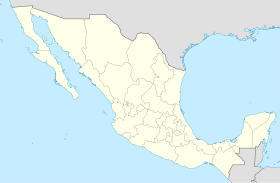lunes, 30 de abril de 2012
DENTAL MEDICAL TOURISM
MEDICAL DENTAL TOURISM
There is substantive discussion pricing and quality Differentials Between locations. Much of this discussion centers around the question of whether or not Imply quality These Differentials Differentials price.
Aside from the above issues, it is possible to compare the prices of treatment in different countries. With the international nature of some products and dental treatment
Although some think it is a good idea to to simply go to the country as a tourist and find a dentist there, rather than to find dentists on the Internet, with certified providers, https://sanimedicaltourism.com/blog/why-would -anyone-travel-for-a-medical-procedure/ you take a great risk just walking into a clinic having done no research. Pricing can be researched on the internet by Comparing sites That Provide lists, but one thing That is even more important Is that researching online, one can get a better notion Also as to the Qualifications of the dentists. Through e-mail contact, you can ask for references, ask acerca payment options, and even get information about The accommodations. When you just walk in off the street, you do not know what They will charge, or if They are reputable. Price is not the only consideration. For example, quality, technology and experience is important, The same is true in the USA - Should one always insist on a certified specialist for serious treatments. You can not expect them to do as good a job as someone who has had 2 years of intense training on implants and who is now board certified as a specialist. - At least one can initiate contact, ask for credentials, references, prices beforehand, and schedule With The clinic to Be Able to get the work done in the quickest Manner, without delays. In this way you can make an Informed decision, and choose wisely.
One other important consideration is location. If you go all the way to India or Singapore or Argentina for a dental procedure, and something goes wrong, it is a long way to go to Have to return and get them to fix it. Many [citation needed] Americans choose to go somewhere Easily accessible from the U.S., ALGODONES BAJA CALIFORNIA small towns like cottons two miles south of the border of yuma az and a big parkin lot in the american side-Cabo San Lucas, Puerto Vallarta, Mazatlan etc. have recently started offering large treatment patients airfare or resort stays. Routines Since Often requires multiple steps, or subsequent Checkups, the patient May have to return to the same Doctor For Those reasons. Or, in the case of dental implants, if the implant is Placed in another country but is restored by another physician locally, the information about the implant can be Difficult to retrieve from the original doctor. Typically though, a patient takes 2 trips To Have implants. The first to , the inplant and a temporary, the second trip after 4-6 months later ones mouth has healed and accepted the implant-one has the temp crown removed and the permanent set. 2 one-week trips are necessary. One-Day-Implants are not recommended for dental tourists due to the higher failure rate of the system.
That Other considerations to take into account patient May include the lack of availability of a dentists, long appointment time delays and the need to take additional time off work. However, When combined with a holiday, as the name implies, dental tourism can be an opportunity to do two things
viernes, 27 de abril de 2012
THE VALUE OF A SMILE
Los Algodones
| Los Algodones | |
|---|---|
| Border crossing into Los Algodones from Andrade, California | |
| | |
Coordinates:  32°42′55″N 114°43′44″W 32°42′55″N 114°43′44″W | |
| Country | |
| State | Baja California |
| Municipality | Municipality of Mexicali |
| Elevation | 108 ft (33 m) |
| Population (2010) | |
| • Total | 5,474 |
Los Algodones is the northernmost town in Mexico, and at its northeastern tip is the northernmost point in Mexico. Another interesting geographical distinction is that if someone were to travel in any of the four cardinal directions from anywhere in Algodones (due north, due east, due south, or due west), they would cross a U.S. border.
Situated near the borders of both southeastern California and southwestern Arizona, Los Algodones has become a popular tourist attraction in recent years due in part to inexpensive shopping and restaurants as well as inexpensive medical care and prescription medicines. The warm, dry climate of the area attracts a number of older tourists from across the United States and Canada who settle during the winter in the nearby towns of Yuma, Arizona and Winterhaven, California. Organized day trips from the Coachella Valley are popular among seniors as well.
From the US side, Los Algodones is most easily reached via Interstate 8 and south a short distance (3.33 Km / 2.07 mi) along State Route 186/Andrade Road to the international border at Andrade, California. From Andrade, visitors can elect to park their vehicles for a small fee and walk across the border or to drive across.
The popularity of both inexpensive prescriptions and medical care catering to Canadian and US senior citizens have prompted a virtual explosion of pharmacies and dental offices which have largely displaced a great deal of the open-air shops and restaurants immediately across the border and have effectively shifted the town's focus from tourism to medicine. Nevertheless, a number of shops and restaurants remain and Los Algodones capitalizes on the tourist trade with frequent fiestas throughout the year, most notably around the Christmas season.
The exact geographical location is 32°42′55″N 114°43′44″W at an elevation of 110 feet/33.5 m above mean sea level.
The Spanish-language name Los Algodones translates into English as "The Cottons (referring to the plants, not the fiber)."
Suscribirse a:
Entradas (Atom)


